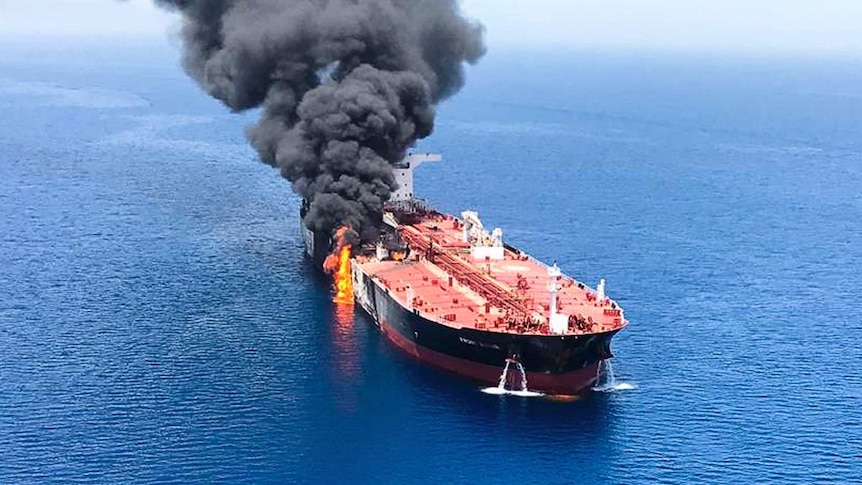
Tanker shares plunge on the stock exchange after OPEC cuts oil production. – The VLCC rates may be reduced from around 90,000 to 60,000 dollars per day as a consequence of this change, says Clarksons analyst Frode Mørkedal.
The Norwegian economy can benefit from yesterday’s Opec+ decision to cut oil production. The krone has strengthened significantly following the news.
Several countries in the Opec+ oil cartel announced at the weekend that they will cut oil production. From May and the end of the year, there will be over 1.6 million fewer barrels of oil per day in the market, as a result of the cuts from the oil cartel.
Rystad reports on Monday that they envisage an oil price of 110 dollars a barrel already in the summer.
Since midnight, the price is up more than 6.5 percent, and is at the time of writing at just over 85 dollars a barrel.
Probably not against 150 dollars a barrel
Nadia Wiggen, partner and energy analyst at Pareto, is surprised by the timing, but points out that the Opec countries are doing this to control the downside of oil prices. It has been in the low 70s for the past few weeks.
– Such a long-term cut means that we see the market approaching the levels of the oil stocks we saw in 2008, 2014 and 2022. It is also important to clarify that Opec has enough reserves, which probably will not send the price skyrocketing towards $150 a barrel , says Wiggen to E24.
Sky-high estimates
The government’s income from oil and gas in 2021 was around NOK 830 billion, which was a new record, according to Nordea Markets.
Nordea’s estimate of Norwegian oil revenues in 2023 was an insane NOK 1,900 billion, but many unpredictable factors, such as the war in Ukraine, have ensured that this has later been adjusted down.
Since the first estimate, the krone has weakened significantly, and the price of oil has recently been lower than what is budgeted for in the National Budget.
There, the government has assumed an average price of NOK 912 per barrel for crude oil. It is down from NOK 986 in 2022. On Monday afternoon, the price is around NOK 880 per barrel.
Makes a big impact
So what does this mean for the Norwegian treasury in kroner and øre?
A change in the average price of NOK 10 will change the government’s net cash flow on oil and gas by NOK 8 billion.
The government’s net cash flow consists of taxes and duties from the oil industry, the income from the government’s own fields managed by Petoro and dividends from Equinor.
Men skulle prisen ta seg opp på nivå med Finansdepartementets estimatet for 2023, vil staten håve inn 1.384 milliarder kroner i oljeinntekter i år.
Kronen styrket seg
Den norske kronen styrket seg umiddelbart da valutahandelen var i gang. Én dollar handles for rundt 10,31 kroner ved 15.40-tiden. Fredag kveld kostet dollaren i overkant av 10,46 kroner.
Én euro handles samtidig for om lag 11,23 kroner. Fredag kveld kostet euroen 11,35 kroner.
Wiggen in Pareto is clear that the cut is overall good news for the Norwegian economy, even if it came as a surprise to the market.
– We are confident that we will see oil prices up to USD 100 a barrel. If it doesn’t happen this year, it will happen in 2024. For the Norwegian economy, this is positive. We immediately saw that the Norwegian krone strengthened, and that as the first currency in the world. Equinor also prioritizes oil over gas now, says Wiggen.
– Biden has gone back on his word
Wiggen is excited about how the American market will respond.
– Now we see that the way in which the US can respond is somewhat limited. They can supplement with up to 0.4 mbd, but that is nothing against the cuts from Opec+.
She believes President Biden and the US Department of Energy have already made a cardinal mistake. Last year, Biden promised that they would buy back oil when the price fell to $72 a barrel.
– We have been there for the last month, but Biden has gone back on his word. It probably played a role in Opec’s decision. The US oil reserves cannot continue to fall at the level they are now. They are already down to the same historically low level they were at in 1982. Then the demand was 45 million barrels per day, while in 2023 it will be 102 million barrels per day.


Be the first to comment